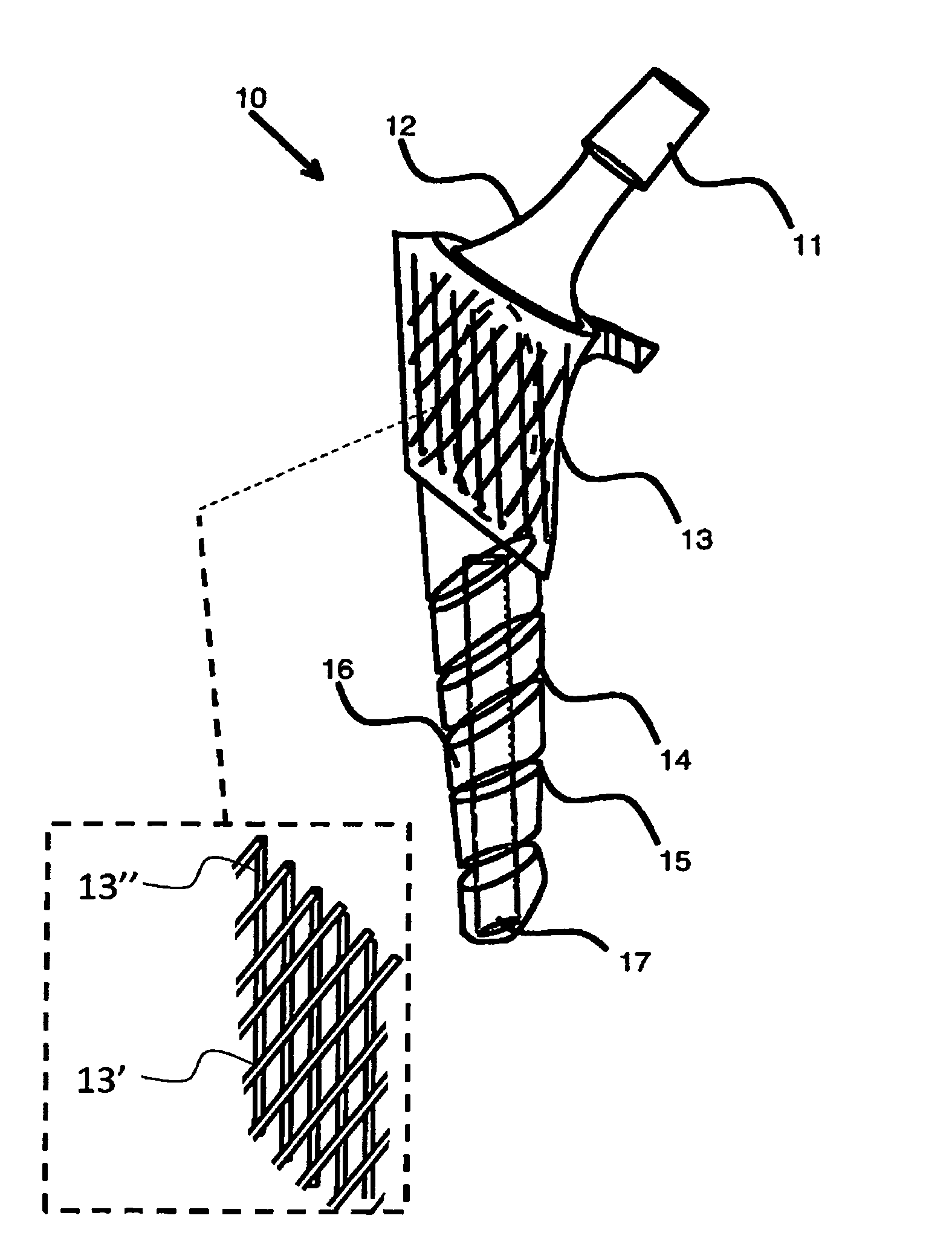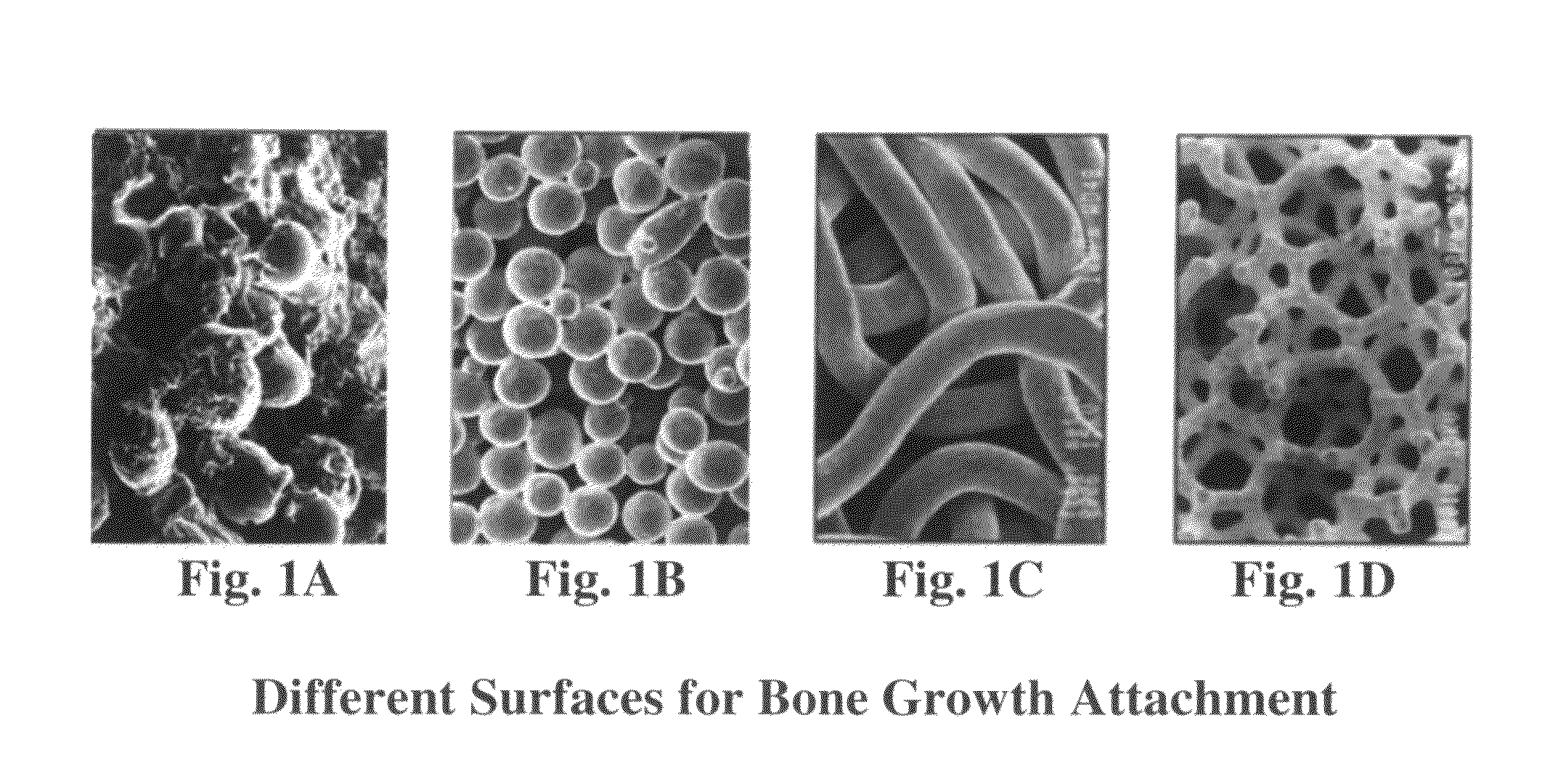Load bearing implants
a technology of load bearing implants and rods, applied in the field of implants, can solve the problems of bone thinning, bone may not fuse, and the elastic modulus of rods is very different from that of bone, so as to reduce excessive loading of bone tissue, prevent the generation of wear debris, and improve the compliance of elastic modulus with bone tissu
- Summary
- Abstract
- Description
- Claims
- Application Information
AI Technical Summary
Benefits of technology
Problems solved by technology
Method used
Image
Examples
Embodiment Construction
[0039]There are many implants designed to replace the articular surface of the human joints. These implants include hip, knee, elbow, shoulder and ankle replacements. The implant designs address two basic principles: (i) replacing the bearing surface of the joint for motion; and (ii) providing a method of fixing the implant to the body. The former design feature has evolved over the past fifty years to include various metals, plastics, ceramics and coatings, which provide low-friction movement with minimal generation of wear debris. These bearing surfaces include a cobalt chrome alloy against ultra high molecular weight polyethylene (UHMWPE), titanium nitride coated metals against UHMWPE, ceramic against ceramic, metal against metal and combinations of these. The results for these bearing surfaces continue to improve the longevity of these implant replacements. Wear debris has been shown to cause bone resorption leading to loosening of the implant from the bone. The latter design fe...
PUM
 Login to View More
Login to View More Abstract
Description
Claims
Application Information
 Login to View More
Login to View More - Generate Ideas
- Intellectual Property
- Life Sciences
- Materials
- Tech Scout
- Unparalleled Data Quality
- Higher Quality Content
- 60% Fewer Hallucinations
Browse by: Latest US Patents, China's latest patents, Technical Efficacy Thesaurus, Application Domain, Technology Topic, Popular Technical Reports.
© 2025 PatSnap. All rights reserved.Legal|Privacy policy|Modern Slavery Act Transparency Statement|Sitemap|About US| Contact US: help@patsnap.com



